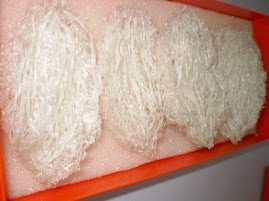Swiftlet, also known scientifically as Aerodramus Fuciphagus. This specie is popularly known as the white nest or edible nest swiftlet.
The hardened salivary cement of Aerodramus swiftlets' nest has been a delicacy treasured by the Chinese since Tang Dynasty Period (618-907 A.D.).
During proliferation period, the swiftlets build their nest with saliva produced by a pair of large, salivary glands under their tongue. The nest normally built in cupped shaped or a half cut bowl about 3-5 inches in diameter.
According to the scientific findings, edible bird's nest (EDB) has been claimed to be an effective health giving tonic. The nest itself is made by swiftlets' rich gel nourishment secretion which modern research has revealed to contain a number of health promoting qualities.
EDB contains lots of calcium and mineral essential for the general health of the body. It is especially nourishing for the lungs, throat, skin, digestion and it helps to prevent overall dryness while boosting the immune system. Regular consumption helps to promote good circulation of the blood system. Ladies believe that the nest can rejuvenate the complexion, smooth the skin and keep them looking young.
Furthermore, it is neither too cooling nor heaty and is suitable for the young and old.
Methods of Preparation
Have fun with the following preparations!
1) Pure bird’s nest
Use a crock pot or double boiler for best results. To add rock sugar or bee rock sugar.
2) Cold bird’s nest
After it is cooked, let it cool for a while before putting into the refrigerator. Do not add ice-cubes to the bird’s nest.
3) Bird’s nest with ginseng
Stew the bird’s nest and ginseng in a crock pot or double boiler and add rock sugar.
4) Bird nest with chicken
Put bird’s nest into chicken. Stew for hours.
5) Bird’s nest with porridge
This will provide us with a very nutritious and delicious meal.
Mouth-watering?
Salivating?









































